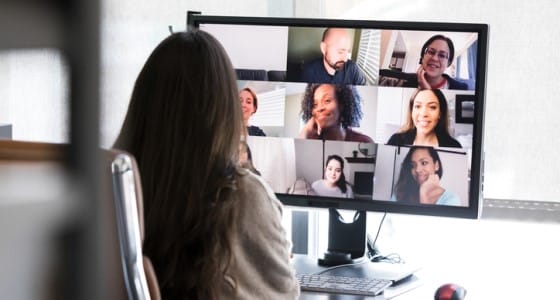
Return, reset, reboard – Where to even start. What do leaders need to know about the employee experience when it comes to reboarding employees after the coronavirus pandemic?
People support a world they help create. Anyone who knows me or has attended one of my training sessions knows that I believe that to my core. From my early days at Delta Airlines, I learned the value of connecting people to each other and to the work, particularly in times of crisis.
That’s why as companies begin to reimagine and redesign work in a COVID-19 world, my advice is that the best decisions are made at the level they’ll be executed, and people don’t argue with their own ideas. The shifting expectations and priorities of today require our best thinking.
As we redefine the way we work, new rules, tools, processes, and procedures are needed. It’s not uncommon in times like these for leaders to make those decisions behind closed doors for speed and simplicity. Don’t!
Nearly 70 percent of initiatives fail because of people-related issues, according to Root, Inc. Adding diverse and inclusive viewpoints lead to better decision making and results, one conversation at a time.
What Does Reboarding Look Like?
No matter what you call the return to work phase in this COVID-19 reality, we were curious at Fierce to compare our experiences with those of our client community. We wanted to know what advice they were giving leaders about employee engagement and development in a virtual world.
We framed the conversation around expectations, priorities, and how we spend our time based on Josh Bersin’s article, The Big Reset: Making Sense of the Coronavirus Crisis.
Our thanks to those who generously offered the following experience and advice for reboarding employees after the coronavirus pandemic:
1. Survey for Safety Concerns
With safety as the number one expectation, identifying who returns to a worksite, by when, under what condition requires careful planning, based on guidelines and the most current recommendations. That’s only half the battle. It’s not enough to take their physical temperature, as it’s essential to consider their emotional temperature as well.
I asked my hairdresser during a recent visit if the business was back to normal. The salon reopened the last week of May following a 12-week shutdown.
I was surprised by her response that only 45 percent of her client group had returned, and the staff was worried. Despite all the safety precautions, like taking your physical temperature at the door, emotionally, many were not willing to return.
Fear is real, and safety is personal. If your employees don’t think it’s safe, there’s a problem.
Survey early and often, ask questions and form advisory groups to get everyone involved. Communicating and implementing workplace safety measures is challenging, so inclusion is critical to success.
2. Coach for Clarity
There has never been a more critical time for leaders to coach for clarity and direction. For many, that commute from home to the worksite was a significant transition period, allowing a shift from personal life to professional life.
Now boundaries are blurred and adjusting to a new routine is stressful and confusing. Add to that, the role of teacher to children now at home or considerate roommate with conflicting work schedules.
I’ve been working remotely as a Fierce employee for years. You’d think this new reality would be a non-issue for me, yet I’ve struggled.
Much of my time was spent on the road, delivering classroom training sessions from coast to coast until mid-March. Finding myself at home, doing dishes 365 days a week, and monitoring little faces on the computer screen felt like a bad dream.
Thank goodness my boss has been patient, flexible, giving me options, and inviting my input every step of the way. I’m beyond grateful.
3. Assume a Positive Intent
From the moment David typed his response into the chat box, people eagerly responded and chimed in. He said, “Even enjoyable changes are still changes and require adjustment.”
I’ve heard many people site the positive side of our current reality. For example, digital goals are now a digital reality in many organizations, including our own.
While I’d love to say that a Zoom session is the next best thing to being together in person, I’m not there yet. Like many of my colleagues, I struggled with settings, virtual tools, and prompts. I still do! And I know my situation is far from unique.
The Best Way to Reboard After Major Change
The good news is that people are so forgiving of those stumbles. I’ve recognized a particular grace or acceptance that is reassuring, enjoying the intimacy of kids, dogs, and family members that join our sessions.
I read a quote in Harvard Business Review many years ago that sums up these thoughts quite nicely: “Ultimately, a company’s value is just the sum of the decisions it makes and executes.”
Conversations that reset our expectations, priorities, and how we spend our time will determine our future. So, let’s make the best decisions together, one conversation at a time.
Tags: #COVID-19, #Onboarding, #Reboarding





